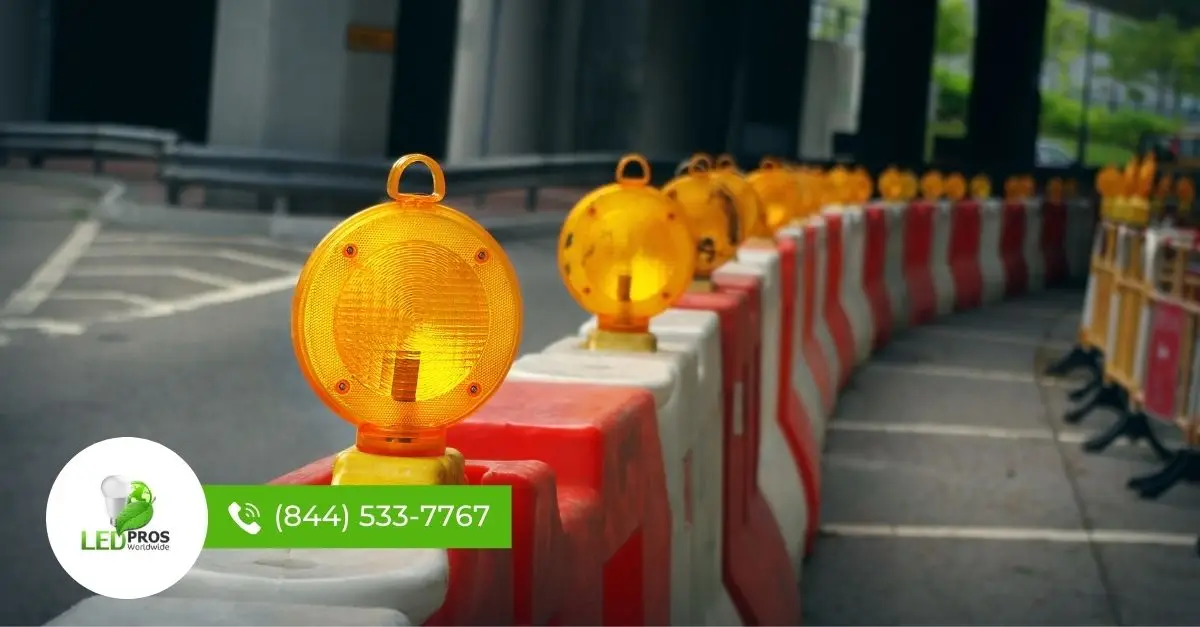When it comes to construction projects, proper lighting is essential for ensuring the safety and efficiency of your team. Gone are the days of relying on traditional, power-hungry lights; today, LED technology has revolutionized the construction lighting industry. In this comprehensive guide, we’ll shed light on the different types of construction lights available and help you understand how they can benefit your worksite.
The Importance of Adequate Lighting in Construction
Construction sites are often active around the clock, making proper illumination crucial for several reasons:
1. Enhanced safety: Well-lit worksites reduce the risk of accidents and injuries.
2. Increased productivity: Adequate lighting allows workers to perform tasks more efficiently, even during late hours.
3. Improved security: Properly illuminated construction sites deter theft and vandalism.
Types of Construction Lights
1. Roadway LED Lights
Roadway LED lights are commonly found on temporary poles or hard-wired into an electrical system. They serve to guide people and vehicles through the construction site, indicating the proper paths to follow and steering them away from potential hazards. By setting up these lights in an obvious pattern, drivers can navigate the site safely, even in the dark.
2. Balloon Lighting
Balloon lights are large, soft-light sources that illuminate a wide area. While they may not provide enough light for intricate tasks, they offer general visibility for the worksite. This type of industrial lighting is particularly useful for security cameras and overall site awareness. Various LED light fittings are available to suit these broader lighting needs.
3. Overhead LED Lights
Mounted high above the worksite, overhead LED lights provide directed illumination to specific work areas. These lights are positioned strategically to ensure that workers can perform their tasks with the same clarity and precision as they would during daylight hours. By placing these lights at an appropriate height, you can avoid creating a blinding or distracting environment for your team.
4. Portable Work Lights
Portable work lights, also known as light towers, consist of several lights mounted on a mast arm. These lights can be adjusted to various heights and positions to best accommodate the needs of the workers and equipment. Portable work lights are a popular choice for construction sites due to their versatility and ability to provide intense illumination over considerable distances.
The Benefits of LED Technology in Construction Lighting
LED technology has transformed the construction lighting industry, offering numerous advantages over traditional lighting methods:
– Energy efficiency: LEDs consume significantly less power than their conventional counterparts, resulting in lower energy costs.
– Durability: High-quality LED lights are built to withstand the tough conditions of a construction site, including impacts, vibrations, and extreme temperatures.
– Longevity: LED lights have a much longer lifespan than traditional bulbs, reducing the need for frequent replacements.
– Eco-friendliness: By consuming less energy and lasting longer, LED lights minimize the environmental impact of construction lighting.
Where to Find the Best Construction Lights
When purchasing construction lights, it’s essential to choose high-quality LED lights that are suitable for your specific fittings. Cheap, low-quality lights may seem tempting, but they can quickly fail and pose a danger to your workers. Fortunately, construction lights are not limited to trade-only suppliers; a wide variety of fittings and bulb types are available for purchase by anyone. Read more about Shine A Light On Your Team’s Workspace With the Best Construction Lights here.
 |
Frequently Asked Questions
1. Can I use construction lights with a domestic electricity supply?
Yes, many construction lights can be used with domestic electricity supplies. However, always ensure that the lights you choose are compatible with your specific setup.
2. How do I determine the best placement for my construction lights?
The optimal placement of your construction lights depends on the unique layout and requirements of your worksite. Consider factors such as the location of work areas, potential hazards, and the overall flow of traffic when deciding where to position your lights.
3. Are LED construction lights more expensive than traditional options?
While LED construction lights may have a higher upfront cost, their energy efficiency and longevity often result in significant long-term savings compared to traditional lighting options. Read more about The Increasing Use Of LEDs In Construction Lights here.
Temporary Construction Lighting Requirements
When setting up temporary lighting for your construction site, it’s crucial to adhere to specific requirements to ensure the safety and well-being of your workers. These requirements are often outlined by local and national regulations, as well as industry standards. By understanding and following these guidelines, you can create a well-lit environment that promotes productivity and reduces the risk of accidents.
Minimum Illumination Levels
One of the primary considerations for temporary worksite lighting is the minimum illumination levels required for various tasks and areas. For example, general construction areas typically require a minimum of 5 foot-candles (54 lux) of illumination, while tasks involving fine details may necessitate higher levels of 10-30 foot-candles (108-323 lux). Stairways, corridors, and other high-traffic areas should maintain a minimum of 3 foot-candles (32 lux) of illumination to ensure safe navigation.
Proper Placement and Adjustment
In addition to meeting the minimum illumination levels, temporary construction lights must also be placed strategically to minimize glare and shadows. Glare can cause discomfort and impair vision, while shadows can obscure potential hazards. To combat these issues, lights should be positioned at appropriate heights and angles, with adjustable fixtures that allow for customization based on the specific needs of each work area.
Electrical Safety Measures
Another essential requirement for temporary construction lighting is the use of proper electrical safety measures. All lighting equipment must be properly grounded and protected by ground fault circuit interrupters (GFCIs) to prevent electrical shock and fire hazards. Wiring and connections should be inspected regularly to ensure they are in good condition and free from damage. When using portable work lights, it’s important to choose models with durable cords and secure connections to minimize the risk of electrical accidents.
Durability and Resilience
Lastly, temporary construction lighting must be able to withstand the harsh conditions of a construction site. Lights should be rugged, weatherproof, and resistant to impacts, vibrations, and extreme temperatures. Choosing high-quality, durable lighting solutions not only ensures reliable illumination but also helps to minimize maintenance and replacement costs over the course of the project.
By adhering to these temporary construction lighting requirements, you can create a safer, more productive work environment for your team. Regularly reviewing and updating your lighting setup to meet changing site conditions and regulations will help you maintain a well-illuminated worksite throughout the duration of your project.
To Sum Up
Investing in high-quality construction lights is a crucial step in ensuring the safety, productivity, and security of your worksite. By understanding the different types of temporary construction lights available and the benefits of LED technology, you can make an informed decision when selecting the best lighting solution for your project. With the right construction lights in place, you can create a well-illuminated environment that enables your team to work efficiently and safely, day or night.
[gravityform id=”1″ title=”true” description=”true”]
